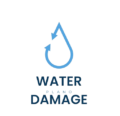Discovering a leaky roof can be a homeowner’s nightmare, leading to significant water damage if not addressed promptly. A roof leak may manifest as discolored patches on the ceiling or dripping water during rainfall. These signs are often frustrating as the location of a leak on the roof isn’t always directly above the damage visible inside the house. When confronted with a leaking roof, it’s essential to act quickly to prevent further damage to the structure of your home and interior belongings. Our water damage restoration Plano company is here to help, in this article, we will show you what to do about a leaky roof.
Effective management of a leaky roof includes identifying the signs of damage, understanding the various types of roof leaks, and knowing the most appropriate repair solutions. While some small leaks can be handled with do-it-yourself fixes, more significant issues often require professional expertise. In addition to repairs, regular maintenance, and preventative measures can play a crucial role in ensuring a roof’s longevity and preventing future leaks. Homeowners should also be equipped to decide when the extent of damage necessitates seeking professional help and have an understanding of common questions surrounding roof leaks.

Table of Contents
Key Takeaways
- Acting swiftly on a leaky roof helps prevent extensive water damage.
- Regular maintenance reduces the risk of future roof leaks.
- Professional expertise is invaluable for major roof repairs.
Identifying Roof Damage and Leaks
Before attempting any repair, it’s critical to first locate and assess the root of the problem. Precise recognition of water stains and the examination of the roof’s condition can reveal the extent of damage and indicate the urgency of intervention.
Conducting a Roof Inspection
A thorough roof inspection is essential to uncover subtle damages that could lead to serious leaks. One should methodically survey the entire roof, paying close attention to shingles, which might be missing, torn, or curled. It’s also important to inspect roof penetrations, such as roof vents, since these are common sites for leaks. Any sign of wear around these points can be an early indicator of potential roof damage. Additionally, examining for improper sealing and deterioration in valleys, where two roof slopes meet, can prevent future leakage issues.
Recognizing Water Stains and Signs of a Leaky Roof
Detecting a leak often starts inside the house by identifying water stains on the ceiling. These may manifest as discolored spots or darkened rings, suggesting the presence of moisture. Bubbles or peeling paint on the ceiling or walls are also telltale signs of water infiltration. Homeowners should not overlook the attic, where daylight shining through the top could indicate a breach, and the underside of the roof should be inspected for any wet spots following rain.
Repair Solutions for Different Types of Roofs

When it comes to roof repair, understanding the appropriate methods for your specific roof type is crucial. Different roofing materials require unique approaches for effective leak repair, and immediate action is necessary to prevent further damage.
Patch Repairs for Minor Roof Leaks
For minor leaks, patch repairs can be an efficient solution. On a shingle roof, one should first identify the damaged shingle. Carefully removing the faulty piece and replacing it with a new asphalt shingle, secured with roofing cement, can resolve the issue. If the shingles are intact, applying a roof sealant under the lifted shingles can prevent further water ingress.
- Metal roofs, however, may require sealant or patches that are specific to the material, ensuring a watertight seal.
Handling Roofing Materials and Shingles
Effective roof leak repair can often rely on how well one handles the roofing materials and shingles:
- Shingle Roofs: Applying a bead of roofing cement beneath the edges of new shingles can fortify their position and seal any potential entry points for water.
- Metal Roofs: For leaks at seams or joints, using a urethane or silicone-based sealant designed for metal can offer longevity and flexibility.
Both types often benefit from small-scale roof replacement in regions where damage is localized, preventing the need for full-scale renovations.
Emergency Measures for Sudden Roof Damage
In the event of sudden roof damage, such as a tree fall or severe weather impact, taking emergency measures to protect the interior is paramount:
- Protect the interior with tarps or plastic sheeting as a temporary solution.
- In case of extensive damage, consider calling a professional to assess whether a roof replacement is required.
Roofing emergencies call for immediate but temporary solutions that should be followed by professional inspection and permanent repairs.
Preventative Measures and Maintenance

Preventative maintenance is essential in avoiding roof leaks and extending the lifespan of a roof. By focusing on critical aspects such as gutter maintenance and regular inspection routines, property owners can mitigate potential issues before they escalate.
Cleaning and Maintaining Gutters
Gutters play a crucial role in preventing water damage and managing roof runoff. However, clogged gutters can lead to water overflow, and in colder climates, could contribute to the formation of an ice dam, which poses a significant threat to the roofing system. To prevent this:
- Ensure gutters are free from debris such as leaves and branches.
- Inspect and clean gutters at least twice a year, particularly after heavy storms.
- Check for proper gutter alignment to confirm that water is channeled effectively away from the roof.
Regular Roof Maintenance Routines
A thorough roof maintenance routine is essential to uncover potential vulnerabilities and repair them promptly:
- Conduct biannual inspections, focusing on signs of wear such as damaged or missing shingles.
- Look for other signs of potential issues, such as damaged flashing or vent covers.
- After severe weather, perform additional checks to address any damage caused by high winds or hail.
By adhering to these maintenance practices, one can maintain the roof’s integrity and prevent costly leak repairs in the future.
When to Seek Professional Expertise
When a roof begins to leak, it’s critical to understand whether a simple repair will suffice or if a more complex solution, such as replacement, is warranted. Expertise from a professional roofing contractor can guide this decision and ensure the safety and longevity of one’s home or commercial building.
Evaluating Repair Cost Versus Roof Replacement
Repair Cost: Homeowners and building managers are advised to compare the short-term and long-term costs associated with roof repairs against the investment of a new roof. For residential roofing, minor issues like replacing a few shingles or fixing a small leak might be cost-effective in the short term. However, in all cases where the damage extends beyond superficial fixes, such as when the roof’s structure is compromised, the prudent course of action is to employ a professional repair service.
New Roof: Deciding on a roof replacement involves considering the age of the existing roof, the extent of damage, and the long-term financial implications. In the case of commercial roofing, where the scale is often larger and the roofing materials may differ, the threshold for replacement may differ from residential scenarios. A sagging structure, widespread water damage, or recurring leaks are unmistakable signs that replacement should be seriously considered over repair.
Choosing a Roofing Contractor
Selecting a roofing contractor requires careful consideration. Credentials such as licensing, insurance, and a solid reputation in the community are non-negotiable attributes. For emergency roof repair scenarios, it’s crucial to find a contractor that offers prompt service to address immediate issues, hence protecting the building from further damage.
- Check References: Reviews and testimonials from past clients can provide valuable insight into a contractor’s reliability and quality of work.
- Material Expertise: Ensure that the contractor is proficient in the type of materials your roof requires, whether it’s traditional asphalt shingles, rubber roofing for flat surfaces, or specialty materials that demand specific roofing nails and installation processes.
Identifying when a damaged roof requires professional intervention is key to safeguarding one’s investment in their property. A trusted roofing professional can navigate the complexities of both repair and replacement, ensuring a secure and durable roof over one’s head.
Frequently Asked Questions
The frequently asked questions below provide practical and immediate guidance for addressing issues related to roof leaks.
How can I identify the source of my roof leak?
Identifying the source often requires investigating the roof for missing shingles, cracks, or penetrations. Inside the house, one should look for water stains or mold as initial indicators of a leak.
What steps should I take to temporarily fix a leaking roof?
Temporarily, homeowners can use roofing tar or a patch to cover the leak or place a tarp over the affected area, securing it until a more permanent solution can be applied.
When is a roof leak considered an emergency?
A roof leak is an emergency if it compromises the structural integrity of the house or poses an immediate threat to the safety and well-being of the inhabitants, requiring urgent professional attention.
What are the long-term repair options for a leak in my roof?
Long-term repairs can range from patching and resealing the affected area to replacing shingles or, in more severe cases, an entire section of the roof.
Who should I contact for professional roof leak repairs?
One should seek out a licensed roofing contractor or a professional roofing company with good reviews and a track record of quality workmanship for repairs.
Is it common for roofs to leak during periods of heavy rainfall, and how should one handle it?
Yes, it’s common for roofs to develop leaks during heavy rains. Homeowners should conduct regular inspections and maintenance to prevent leaks, and address any damage as soon as it’s detected to mitigate the effects of heavy rainfall.
